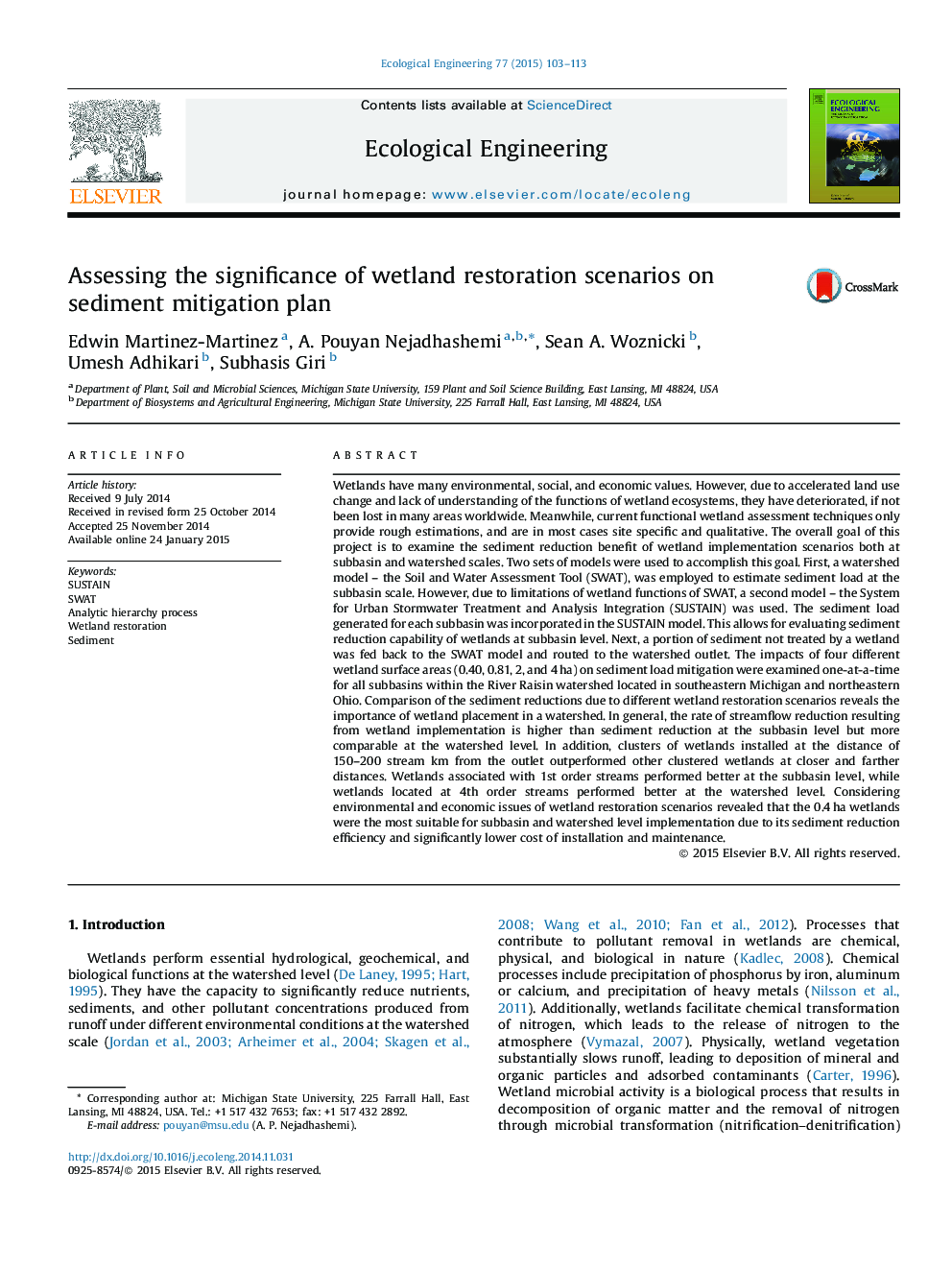| کد مقاله | کد نشریه | سال انتشار | مقاله انگلیسی | نسخه تمام متن |
|---|---|---|---|---|
| 4389254 | 1618022 | 2015 | 11 صفحه PDF | دانلود رایگان |
• Modeling techniques were used to study the impact of wetland restoration on sediment reduction.
• Four restoration scenarios were developed based on different wetland areas.
• Economic and environmental issues were considered for ranking and placement of wetlands.
• This study can help with development of watershed scale sediment reduction plan.
Wetlands have many environmental, social, and economic values. However, due to accelerated land use change and lack of understanding of the functions of wetland ecosystems, they have deteriorated, if not been lost in many areas worldwide. Meanwhile, current functional wetland assessment techniques only provide rough estimations, and are in most cases site specific and qualitative. The overall goal of this project is to examine the sediment reduction benefit of wetland implementation scenarios both at subbasin and watershed scales. Two sets of models were used to accomplish this goal. First, a watershed model – the Soil and Water Assessment Tool (SWAT), was employed to estimate sediment load at the subbasin scale. However, due to limitations of wetland functions of SWAT, a second model – the System for Urban Stormwater Treatment and Analysis Integration (SUSTAIN) was used. The sediment load generated for each subbasin was incorporated in the SUSTAIN model. This allows for evaluating sediment reduction capability of wetlands at subbasin level. Next, a portion of sediment not treated by a wetland was fed back to the SWAT model and routed to the watershed outlet. The impacts of four different wetland surface areas (0.40, 0.81, 2, and 4 ha) on sediment load mitigation were examined one-at-a-time for all subbasins within the River Raisin watershed located in southeastern Michigan and northeastern Ohio. Comparison of the sediment reductions due to different wetland restoration scenarios reveals the importance of wetland placement in a watershed. In general, the rate of streamflow reduction resulting from wetland implementation is higher than sediment reduction at the subbasin level but more comparable at the watershed level. In addition, clusters of wetlands installed at the distance of 150–200 stream km from the outlet outperformed other clustered wetlands at closer and farther distances. Wetlands associated with 1st order streams performed better at the subbasin level, while wetlands located at 4th order streams performed better at the watershed level. Considering environmental and economic issues of wetland restoration scenarios revealed that the 0.4 ha wetlands were the most suitable for subbasin and watershed level implementation due to its sediment reduction efficiency and significantly lower cost of installation and maintenance.
Journal: Ecological Engineering - Volume 77, April 2015, Pages 103–113
